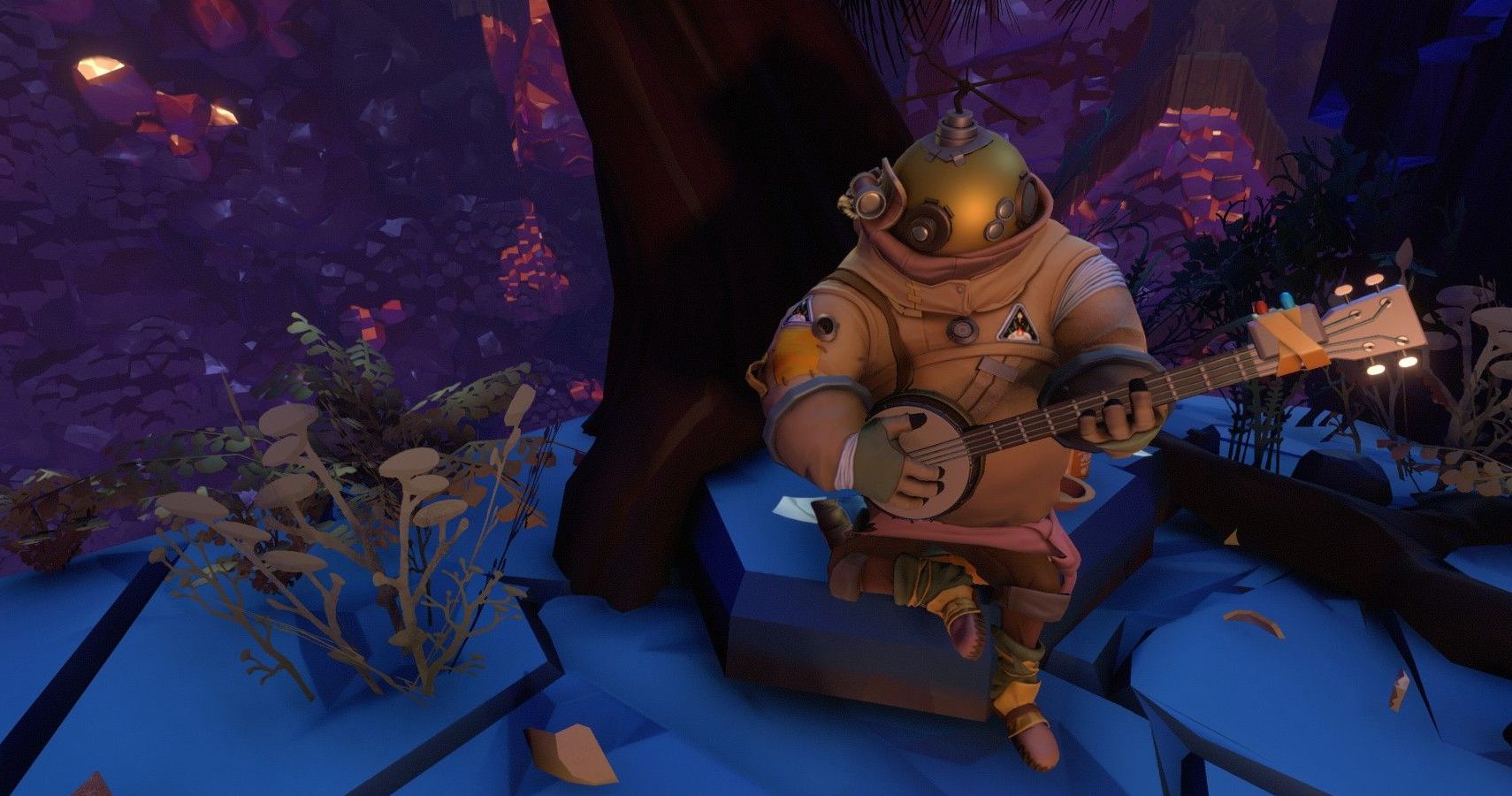

As you slowly spacewalk your way through each cycle, you’ll grow to accept the inescapability of in-game death. At first, you won’t know why the universe keeps ending after 22 minutes or why your consciousness keeps time-travelling to the same moment whenever you die. Unless one of the planets’ hazards kills you first.Įarly in the story, you’ll learn that the game is centred on a time loop. Brilliant planets like the Hourglass Twins and Brittle Hollow transform before your eyes within the span of 22 minutes.Īnd 22 minutes is all you have to explore these planets before you inevitably perish in a universe-wide blaze of glory.

With its towering cyclones, the planet Giant’s Deep is ominous, atmospheric, and imposing. It is one of the most terrifying locations you’ll ever visit in a G-rated game. The Dark Bramble is a nightmarish unfolding maze that, like a TARDIS, is bigger on the inside.

And none of these locations overstay their welcome. The game’s solar system may not be a massive procedurally generated universe, but its smaller planets are packed with lovingly crafted detail. The game’s premise may sound like No Man’s Sky, but it is a perfect demonstration of the intricate worlds that procedural generation can’t create. The intentionality of Outer Wilds’ world design is what makes the game’s exploration so rewarding. Contrasting the tired tropes present in sci-fi metropolises, the lands of Outer Wilds are untamed, mystifying, and savagely beautiful. Unlike most other sci-fi games, the planets of Outer Wilds are some of the most incredible, kaleidoscopic locations I have experienced in a game. Like most other sci-fi games, death is an imminent possibility in Outer Wilds. Even the smallest bit of information might help you save the universe. You’ll soon realise that all of these enigmas are connected. However, every discovery leads to a helpful tidbit of information. The game doesn’t hold your hand or tell you what to do. The brilliance of Outer Wilds‘ open-ended mission design is that there’s always a reason to follow up on a clue. There are only mysteries, questions, and the promise of answers if you look hard enough.īut in the worlds of Outer Wilds, questions often lead to more questions, and before long, you’re sucked into a web of mysteries about an ancient, advanced civilisation. There are no feathers, loot, or extra skill points waiting around the next corner. While most triple-A open-world titles use upgrades and collectibles as an incentive for exploration, the Outer Wilds dev team wanted the act of discovery to be the player’s reward. The creative director, Alex Beachum, and his collaborators were students at USC’s Interactive Media program when they conceived a thesis project based on player curiosity. Outer Wilds Screenshot – Source Curiosity Killed the Hearthian But I can confidently say that Outer Wilds is the most unique sci-fi gaming experience I have ever had. Both of these titles are sci-fi games featuring planet exploration with detailed world-building. To be fair, it’s easy to understand the confusion. Despite winning Best Game at the year’s British Academy Game Awards and being a contender for several other Game of the Year awards, many gamers still think you’re talking about The Outer Worlds when you mention it. Ultimate, Outer Wilds flew under the radar in a small Hearthian spaceship. In 2019, a year that saw the release of titles such as Red Dead Redemption 2, Death Stranding, and Super Smash Bros. And all of it started as an assignment for a master’s thesis.

It is a deceptively simple game with layers of meaning, both in its gameplay design and its story. It manages to be a profound meditation on the nature of life and death and a sincere demonstration of why video games are fun. Outer Wilds is a game about death, rebirth, discovery, and the value of the journey over the destination. I will try my best to avoid major spoilers, but there are some “spoilery” details below. Please Note: Outer Wilds is a game that is best experienced through a blind playthrough.


 0 kommentar(er)
0 kommentar(er)
